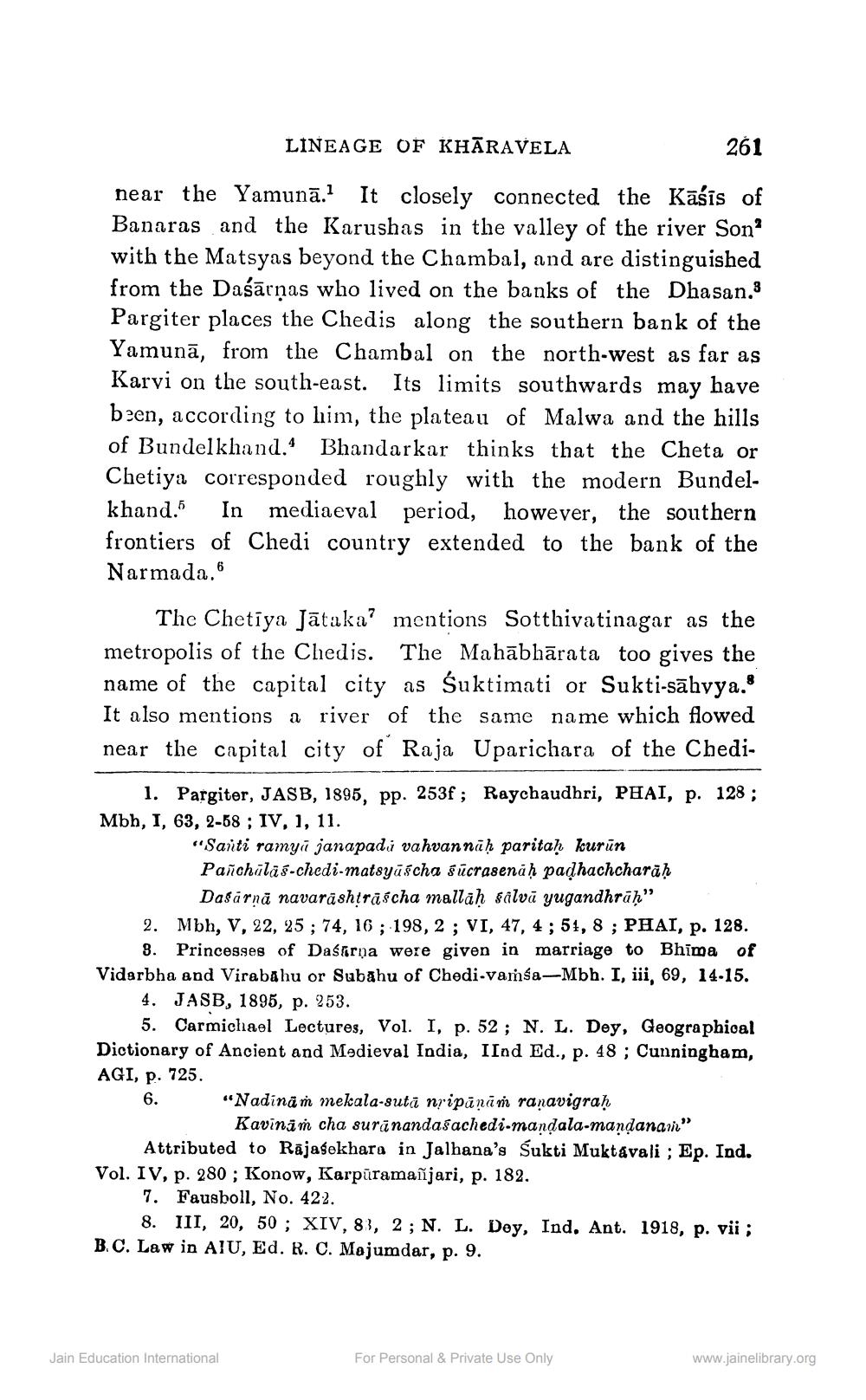________________
LINEAGE OF KHĀRAVELA
261
near the Yamunā. It closely connected the Kāsis of Banaras and the Karushas in the valley of the river Sono with the Matsyas beyond the Chambal, and are distinguished from the Daśārņas who lived on the banks of the Dhasan.3 Pargiter places the Chedis along the southern bank of the Yamunā, from the Chambal on the north-west as far as Karvi on the south-east. Its limits southwards may have been, according to him, the plateau of Malwa and the hills of Bundelkhand.' Bhandarkar thinks that the Cheta or Chetiya corresponded roughly with the modern Bundelkhand. In mediaeval period, however, the southern frontiers of Chedi country extended to the bank of the Narmada..
The Chetiya Jātaka? mentions Sotthivatinagar as the metropolis of the Chedis. The Mahābhārata too gives the name of the capital city as Śuktimati or Sukti-sāhvya. It also mentions a river of the same name which flowed near the capital city of Raja Uparichara of the Chedi
1. Pargiter, JASB, 1895, pp. 253f ; Raychaudhri, PHẠI, p. 128 ; Mbh, I, 63, 2-68 ; IV, 1, 11.
“Santi ramya janapadi vahvannāḥ paritaḥ kurun Pañchūlās-chedi-matsyūṣcha sūcrasenaḥ padhachcharāḥ
Dasārņā navarashträscha mallāḥ salvā yugandhrāḥ” 2. Mbh, V, 22, 25; 74, 16 ; 198,2 ; VI, 47, 4 ; 51, 8 ; PHAI, p. 128.
3. Princesses of Dasarna were given in marriage to Bhima of Vidarbha and Virabahu or Subahu of Chedi-vamsa-Mbh. I, iii, 69, 14-15.
4. JASB, 1895, p. 253.
5. Carmichael Lectures, Vol. I, p. 52; N. L. Dey, Geographical Dictionary of Ancient and Medieval India, IInd Ed., p. 48 ; Cunningham, AGI, p. 725. 6. "Nadinām mekala-sută nripānām ranavigrah
Kavinä сha surānandarachedi-mandala-mandanari" Attributed to Rajasekhara in Jalhana's sukti Muktavali; Ep. Ind. Vol. IV, p. 280 ; Konow, Karpūramasjari, p. 182.
7. Fausboll, No. 422.
8. III, 20, 50 ; XIV, 83, 2; N. L. Doy, Ind. Ant. 1918, p. vii ; B.C. Law in AIU, Ed. R. C. Mojumdar, p. 9.
Jain Education International
For Personal & Private Use Only
www.jainelibrary.org




